Additional notes (click to expand)
Medicinal
Purgative, oil extracted from the bean (Castor oil), being used as a laxative
Van Wyk, Wink, BE . (2017). Medicinal Plants of the World. CABI.
One of its earliest mentions appears in the Ebers papyrus, a document of 700 prescriptions penned by an Egyptian priest dating to 1500BC
Yeow-Chin, W. (2005). Plants that Heal, Thrill and Kill. SNP Reference.
Medicinal uses
Uses supported by clinical data
None.
Uses described in pharmacopoeias and well established documents
Short-term treatment (3–5 days) for acute constipation when other dietary
methods or bulk-forming laxatives have not provided adequate relief.
As a cathartic for use in bowel evacuation prior to surgery (21). Used
externally for topical dermatoses and dermatitis (5, 6).
Uses described in traditional medicine
Used as an emmenagogue, to induce labour, for the treatment of burns,
bronchitis, diarrhoea, itching, earache, haemorrhoids, pneumonia, rheumatism
and sprains (6, 22, 23).
From WHO Monographs on Selected Medicinal Plants Vol 4 2005, WHO Geneva
Contraindications
Oleum Ricini should not be used as a laxative during pregnancy or while
breastfeeding (5, 13), or in children under the age of 12 years.
Due to stimulation of bile flow, the oil should not be used by patients
with biliary tract obstructions or other biliary disorders.
Oleum Ricini is contraindicated in patients with hypersensitivity or
allergy to the oil, appendicitis, chronic inflammatory bowel disorders,
undiagnosed abdominal pain or severe dehydration associated with the
loss of salt and water.
It should not be used in cases of intestinal blockage and ileus.
From WHO Monographs on Selected Medicinal Plants Vol 4 2005, WHO Geneva
Nomenclature
Palma Christi
L'Obel, M, de Pena, P. (1571). Nova Stirpium Adversaria. Thomas Purfoot, London. p. 306
Other use
Food additive: flavouring, also for protective coating of tablets; Fuels: potential as petrol substitute/ alcohol; Invertebrate food: silk worms; Materials: beads, lipids.
This was known as Palma Christi, or Figuera di l’inferno (the fig from hell) according to Lobel. The coat of the seed of this plant from Southern Europe and North Africa is the source of the poison ricin, best known for the umbrella murder in 1978 when the Bulgarian secret service was alleged to have killed Georgi Markov with a pellet containing ricin (although none was found), using an air gun disguised as an umbrella, on Waterloo Bridge in London. The seeds also produce castor oil (which does not contain ricin), formerly used as a laxative. The leaves are used worldwide as a herbal remedy for stomach complaints. Woodville describes at length how castor oil is extracted, but neither he nor Lindley mention that the seeds are poisonous. Lyte says that the oil, then known as Oleum cicinum, was good for rubbing on the skin, and the leaves for swollen eyes and erysipelas, but that the seed makes one vomit ‘with much payne and greefe’. Two seeds ingested are said to be fatal, but vomiting as a reaction to poisons protects the unwary.
Oakeley, Dr. Henry. (2011). A Year in the Medicinal Garden of the Royal College of Physicians, revised edition. Royal College of Physicians, London. p.61
link
Used currently as an industrial lubricant and in the manufacture of polymers.
Van Wyk, Wink, BE . (2017). Medicinal Plants of the World. CABI.
Important constituent of high pressure lubricants
Professor Anthony Dayan, 2022
Phytochemistry
Seed is high in ricinolieic acid
Two toxins – ricinine and ricin, found in the seed coat
Van Wyk, Wink, BE . (2017). Medicinal Plants of the World. CABI.
Toxicity
Ricinus communis L. Euphorbiaceae Castor oil plant. Palma Christi. Distribution: Mediterranean, E Africa, India. The seeds themselves are pretty, brown, bean-like usually with gold filigree markings on them, and the interior of the seed is the source of castor oil. The outer coat of the seed is the source of the poison ricin, famous (infamous) for the umbrella murder of Georgi Markov on Waterloo Bridge in 1978. The KGB are alleged to have killed Georgi Markov, a dissident Bulgarian journalist, with a pellet containing 0.28mgm of ricin fired into his leg using a specially adapted air gun in an umbrella. While his symptoms were those of ricin poisoning, no ricin was ever found in the pellet that was extracted from his leg. Two seeds, chewed and ingested are said to be fatal, but most people vomit and get rid of the toxin. Ducks are resistant to ricin, and need to ingest more than 80 to be fatal! In Peru the leaves are used as a tea for stomach ache, although they contain small amounts of ricin. It is called Palma Christi in early herbals because of the five pointed leaves, which schematically represent a hand. It is a monotypic genus in the spurge family.
Oakeley, Dr. Henry F. (2013). Wellcome Library notes.
link
"Humans/Pets: Toxic if eaten" - HTA guidelines
HTA Guide to Potentially Harmful Plants, 3rd Edition (2022)
Geographical distribution
- Africa
Ricinus communis L.
Family: EUPHORBIACEAEGenus: Ricinus
Species: communis L.
Common names: Castor Oil Plant, Palma christi
Distribution summary: Pantropic
Habit: Annual
Hardiness: H2 - Tender; cool or frost-free greenhouse
Garden status: Currently grown
Garden location: Poisons garden (PETO)
Flowering months: July, August, September
Reason for growing: Medicinal, other use, toxic
.JPG)
.JPG)

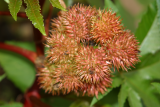

.JPG)
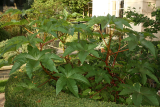
.JPG)
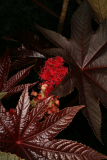
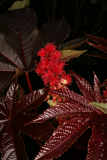
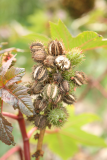

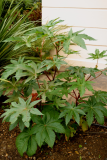
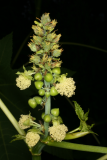

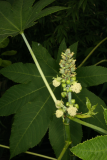
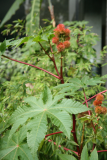
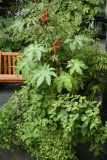
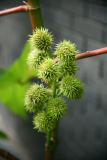

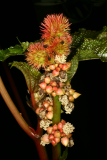
.JPG)
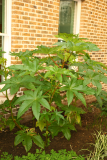
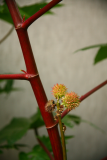
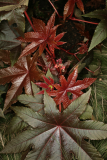
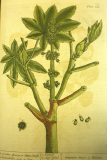
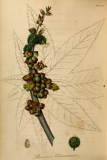
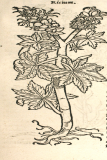


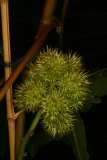
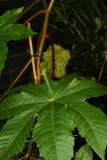



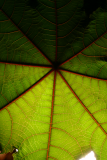
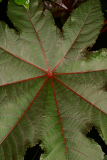


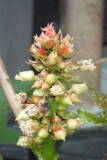
.JPG)
.JPG)